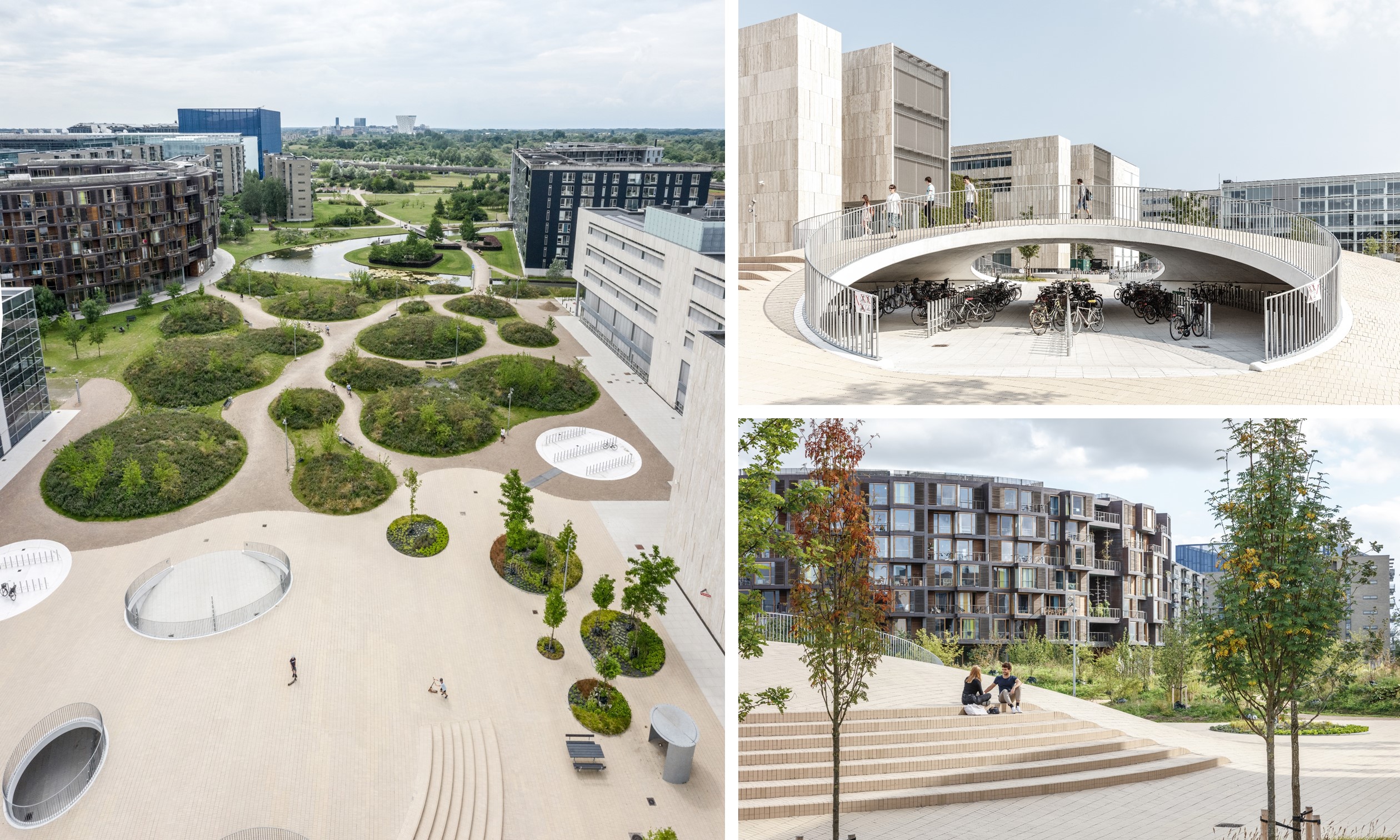
Copenhagen's open spaces are under increasing pressure to perform infrastructural and technical tasks, manage storm water, decrease heat island effects, and provide places for people to gather while allowing for natural habitats. So, how can we address all of these environmental issues?
Karen Blixens Plads hopes to be a part of the answer by providing climate change adaptation, rainwater management, biodiversity enhancement, and green transportation while enhancing the local community with a new unique venue for social interaction.
The project is one of several submitted for the 2021 New European Bauhaus award prizes in the category of "Reinvented places to meet and share."
Karen Blixens Plads is an urban space on the South Campus of the University of Copenhagen in Copenhagen, Denmark.
The square, named for the 19th-century Danish author Karen Blixen, covers roughly 20,000 m², making it one of the city's largest public squares. The plaza is between the recently constructed campus and the nature reserve Amager Commons.
The urban space is linked to Amager Commons, a 223 ha nature reserve, by a gradual transition, transforming Karen Blixen's Plads into a mix of park and public square, organized as an overlaid surface of artificial hills and valleys with space for 2,000 parked bicycles.
Currently, three forms of bicycle parking have been built: bicycle hills and two types of bicycle beds. Both uncovered and covered, with a bit of incline in the ground.
The plaza is designed with a 50/50 hardscape/soft surface split, enabling high-capacity bicycle traffic and parking, rainwater collecting, stormwater management, and large social events for over 1,000 people.
The 10,000 m² green park helps the natural biodiversity of the nearby commons by decreasing heat island effects, cleansing the air, & relieving stress. The colorful & informal design encourages people of all ages to socialize, move, and play while boosting green mobility.
Overall, the square functions as a public landscape with a significant utilitarian and inclusive role and as a recreational resource—being transformed into a three-dimensional comunal hangout.
📸 © European Union
- Reference
- Prizes 2021, Other Applications
- Project locations
- Copenhagen, Denmark
